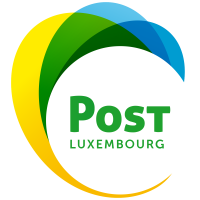
ABOUT THE CLIENT
- POST is the country’s leading postal and telecommunications operator and offers its services to residential and business customers. Other activities include postal financial services and philately.
- It employs more than 4,500 people of 50 different nationalities, making it the country’s largest employer.
- In 2021, POST Telecom’s turnover was 506 million Euros, of which 34% resulted from mobile and 31% from fixed-lines.
THE CONTEXT
The “TETRA” project consisted of a complete overhaul of its telecom systems (from order reception to customer delivery), procedures and processes. It enabled the company to move from an ageing product management and billing system to a solution that integrates fixed, ICT and mobile, allowing the automation of certain tasks and thus saving time for activities with higher added value for the employees.
TETRA affected all POST Telecom employees, whether employees in their retail outlets or installation and network engineers, i.e. over 500 people.
Furthermore, this reorganisation project required a complete overhaul of the product catalogues of POST Telecom and POST Technologies, as well as a thorough review of the way in which departments that had previously been working in different fields could work together. TETRA brought together the network technical teams, the product development teams and the sales teams, who had to sit down together and define how to collaborate and exchange information. They had to agree on how to handle all end-to-end operations, e.g. for ordering and delivering products, product support and troubleshooting, invoicing products and services.
MINDFOREST'S MISSION
MindForest was mandated to accompany the project, with particular emphasis on the aspects of communication, adoption and organisation.
Communication
- Including the publication of articles, newsletters and videos to communicate on project progress to all staff members. As the project was very technical, it was important to make the information comprehensible for the staff affected, so that they would feel involved. - "Pitstops" were organised every 3-4 months in videoconference mode (the entire project took place during the Covid period, which greatly limited the possibility of organising physical meetings). The aim was to invite the 3 directors (Pierre Zimmer, Cliff Konsbruck and Gaston Bohnenberger) speak about their vision, project progress, the risks involved and the project timeline. These events were highly appreciated and anticipated, bringing together several hundred employees behind their screens, who could ask their questions via the chat function.
Adoption
- Evaluation of employee adoption levels, using regular IUAP (Information - Understanding - Adherence - Participation) surveys to collect opinions and fears, to evaluate progress on adoption levels and to identify the teams, which would require additional measures to help them align to the project. - The design and production of videos comparing the old system and the new one, to highlight the benefits in terms of interfaces and potential time saving thanks to the automation of certain steps (e.g. the elimination of order double entry). These demonstrations helped put to rest certain rumours about the tool's poor performance levels. - The organisation and running of a network of "Transformation Officers", chosen to represent the various departments. They acted as a communication channel between management and the employees in the field in order to pass on details of their fears and problems encountered in their teams and, conversely, to pass on information from management about the decisions taken and project progress. - The definition of methods and templates to document the new working environment.
Organisation
- As the new solution highlighted the need for transversal workflows, involving teams from one end of the chain to the other, it was necessary to bring together the teams concerned to reflect together on the new operating mode and its impact in terms of tasks to be carried out, the distribution of roles and the volume of work (a reflection that could be summarised by the question: "who is going to do what, when?”. - As in any reorganisation, some teams had tasks taken away from them and others acquired them. Some skills had to be developed, others to be transferred. It was essential to involve the teams in the construction of this new way of working, so that the changes could be understood and anticipated. - Workshops were organised and workflows modelled to visually represent the changes for the teams concerned. The Transformation Officers were called upon to mobilise the people concerned and bring the discussions to a successful conclusion.
TOOLS, METHODS & ACTIONS
A governance board was set up including all the project sponsors from POST Telecom, POST Technologies, the development team, the communication team and the project manager. They worked together to define which measures should be implemented to maintain project momentum.
A network of Transformation Officers was also set up to represent the different teams affected. They were called upon to pass on information to and from the field, to bring people together, reassure them and alert them to critical points, which could then be discussed at the twice-monthly "Transition Meetings".
Workshops and sessions to design - model - future ways of working were also organised, during which the global attribution of all tasks to the different teams was discussed and defined.
An IUAP barometer (Information – Understanding – Adherence – Participation) was implemented to measure employee adoption levels.
The project team also defined and monitored a risk matrix and risk indicators.
Following participation in the Steering Committee, all decisions and adoption results were communicated to the POST directors.
A communication strategy was defined in close collaboration with the communication department to define the right tools and channels with which to communicate all project-related news.
THE PROJECT OUTCOME
because they were involved in the co-construction of the new cross-functional operational system. Changes to existing situations were anticipated and communicated.
THE MAIN SUCCESS FACTORS
A governance board
that was involved in the project and assumed responsibility for the missions entrusted to it in terms of adoption
Employees volunteered
to take part in workshops and to contribute to discussions about how to envisage the future cross-functional operational mode.
Transformation Officers
playing their role as ‘relayers’ of feedback and information
The directors were transparent
they communicated regularly and directly with employees via the Pitstop meetings.





